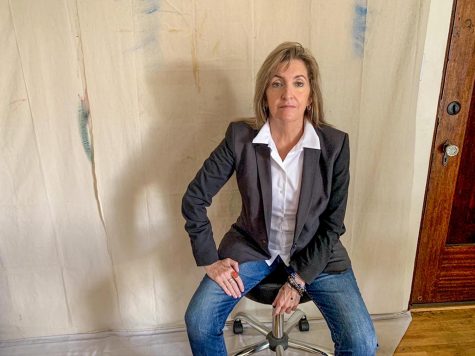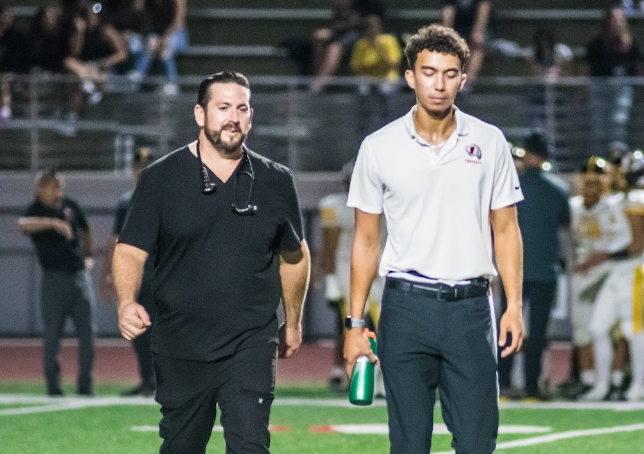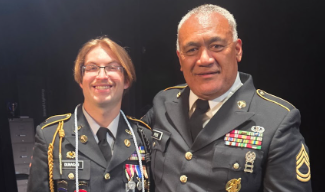
At Bartram Trail High School in Florida, 80 female students’ yearbook portraits were edited last year to hide their cleavage and shoulders. However, the boys swim team, clad in Speedos, went unaltered on the sports pages. Recent controversies like these have heightened the national debate surrounding high school dress codes. Is the language in school dress codes sexist? Is the enforcement of rules about girls covering up their bodies a form of body shaming?
Questions like these are being explored this semester as the district prepares to draft new dress code guidelines with input from ASB students from all six high schools.
The Fullerton High School dress code prohibits “strapless shirts or exposed backs, sides, and/or midriffs.” According to campus supervisor Rose King, clothing restrictions are in place to protect girls rather than to harass them.
“The girls, because of the way we’re built, we’re not built like boys. So there’s a little bit of self respect and respect from others that we need, which you don’t always get,” said King, who will sometimes tell female students to cover up while she’s monitoring the quad at break and lunch.
King says that requiring modesty will prevent male students and teachers from feeling uncomfortable around scantily clad girls.
“There’s also boys and when you’re growing up, you have feelings and you deal with certain things,” King said. “And then if there’s a teacher that’s saying, ‘I don’t feel comfortable with her dressed like this in my classroom,’ we have to honor that, you know? I have to do my job.”
Male students, however, say they feel insulted that there are rules in place because school officials don’t think boys can control their sexual urges if they see an exposed belly button or some cleavage. Junior AJ Hernandez says the dress code overregulates what girls wear.
“I feel like the women’s dress code is stricter than the guys’ dress code,” Hernandez said. “I feel like they should be able to wear what they want, whatever they’re comfortable with and what they like. Her choice is her body. She can do whatever she wants.”

For an expert opinion, the Tribe Tribune sat down with Dr. Karyl Ketchum, the department chair of Women and Gender Studies at Cal State Fullerton, to discuss the district’s dress codes. Ketchum earned her Master’s degree and PhD in cultural studies, a field rooted in principles of social justice and visual culture. She co-wrote Gender Diversity and LGBTQ Inclusion in K-12 Schools: A Guide to Supporting Students, Changing Lives which explores the critical theory and practical application of supporting queer students through their primary education.
Our reporters shared with Dr. Ketchum a chart with the specific dress codes from all of the district schools. After taking a look at the Tribe Tribune’s research, Ketchum was “horrified” by what she saw.
“It was just archaic really, just shocking. I came up with several things that immediately jumped out,” Ketchum said. “I could probably look at this and write a whole book about what I’m seeing in this chart.”
Ketchum cited certain phrases, such as “clothing related to a group or gang which may provoke others to violence, disrupt school operations,” from the Fullerton dress code, and “extreme neckline may result in undue exposure,” from the Sunny Hills High School dress code, that she says shames girls for their femininity.
“It makes girls and women responsible for boys and men’s sexual behavior, which is an outrageous thing to be insinuating,” Ketchum said. “Not only is that shocking to me, that we would have schools making these sorts of statements today, but it also naturalizes rape culture. It sends boys the message that this is how you respond to this, so we need to protect you by controlling women’s bodies so you don’t commit acts of sexual violence.”

Other rules, such as Fullerton’s ban on “strapless shirts/exposed backs, sides, midriffs, undergarments without appropriate outer clothing,” sets up girls to fail in society by sending mixed messages, according to Ketchum.
“We look at fashion magazines and things around us to see what it means to be properly ‘feminine,’ and those bodies are very often revealing,” Ketchum said. “The dominant forms of femininity that you see reflected in mainstream media representations incriminate girls and women and make them guilty while at the same time sending them the message that, to be valued and loved in our culture, they should highlight their to-be-looked-at-ness.”
Ketchum also thinks that certain words that appear in multiple district dress codes, like “appropriate,” “extreme,” and “exceptionally short,” are damaging to a girl’s sense of competency.
“To be ‘appropriate’ means to disappear,” Ketchum said. “The body is not a bad thing, right? The body is complicated for sure, sexuality is complicated, but it isn’t inherently bad or wrong.”
Rules against sagging pants, ironed-on creases, bandanas, and hairnets are derogatory to urban culture, and by extension, BIPOC (Black, Indigenous, people of color) communities.
“It sends a very strong message of racial discrimination and anything associated with urban culture and urban fashion is banned or coded as being wrong or bad,” Ketchum said. “You are also sending another really important message of white supremacy. Those things are always present together.”
Ketchum says creating the dress code should be a community effort that reflects students’ best interests.
“These standards need to be redone every single year in the community because things change so dramatically,” Ketchum said. “I wish it were more of a community based process that was rooted in principles of social justice rather than this top-down, 1950s approach and an approach that is quite frankly white supremacist in its nature. It should follow the principles of restorative justice.”
However, Ketchum feels that Fullerton’s dress code is so strict because of the human drive to conform.
“This idea of conformity is something that seems to be a big deal particularly when you’re younger. I think in particular in high school that’s true,” Ketchum said. “Sometimes it’s so intense that people lose their lives over this drive to conform. They don’t fit in and so they end up making decisions that are damaging as a result of not fitting in.”
Ketchum also cites a metaphor of a fish in water to describe socialization. A fish can’t see or feel the water it inhabits, so the water becomes virtually invisible.
“I think that sometimes the systems of conformity are like that. We are raised within them and they become so co-existent with who we are as humans that we no longer see their effects,” Ketchum said. “We don’t know what gender, what sexuality is natural or normal; we don’t know that because we can’t ever take away the cultural influences that tell us what’s natural and normal.”






